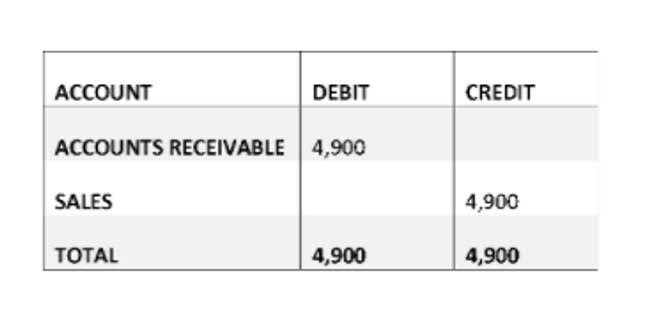Content

A notable benefit of semi-monthly pay is that it aligns with the business’ cycle. Since employees get paid around the same time as the business makes money, it is easier to pay them on time. An exploration into some of the key differences between a bi-weekly and a semi-monthly payroll schedule.
Conversely, semi-monthly paychecks will vary in the number of days they include, making it more challenging for whoever handles the company’s payroll. The most obvious difference is that a semimonthly payroll is paid out twice a month, while a biweekly payroll is paid out every two weeks. That means that in a semimonthly pay schedule, you get paid https://www.bookstime.com/articles/semimonthly-vs-biweekly-payroll 24 times a year, and with a biweekly schedule, there are 26 pay periods. With a biweekly pay schedule, there are two months in the year where employees receive three paychecks. Employees who are paid semimonthly always receive two paychecks per month. Companies that run payroll with a biweekly frequency dole out a total of 26 paychecks per year.
What is the difference between bi-weekly pay and semi-monthly pay?
Having Payroll and Time Tracking in BambooHR makes gathering hourly payroll information and submitting it correctly much simpler. There’s less room for errors and more breathing room in your payroll schedule with all your personnel data, hourly data, and payroll processing in a single system. Join us for a live webinar all about how BambooHR seamlessly supports your hourly payroll process.
It will be up to you and your accountant to make sure you will have enough to cover the extra payout. Although bi-weekly offers smaller paychecks each pay period compared to a semi-monthly pay schedule, it still equates to more paydays. This makes it easier for employees to save more money during certain months because they receive an additional paycheck. Additional paychecks can be very beneficial during the holiday season.
Trick to Remember the Difference
Annual leave will not be accrued with the August 12th bridge payment, but it will be doubled in the following August 26th pay. Overtime worked on Sunday July 31 will be included in the first bi-weekly pay in August. Shortlister Connect is a tool specifically designed to be utilized by the HR and Procurement/Sourcing teams within mid-size, large and jumbo employers. We’ve covered a lot about the different payment frequencies already.
Reporting of time in TimeClock Plus is still required for non-exempt employees. TimeClock Plus includes fields to track time off as well as time worked for the reasons outlined below. If the amount deducted is a percentage of your earnings, you will contribute the same amount over the course of a year on a bi-weekly basis as you would have on a semi-monthly basis. Voluntary retirement deductions can be percentage based or flat rate.
Is There a Penalty for Paying Payroll Taxes Early?
As a result, after HR’s input, it is necessary to weigh the benefits and drawbacks of each and determine which is best for the organization. There isn’t one right option here, and there are pros and cons of each to consider. We’ll help you uncover business risks and create strategies to mitigate them. We write only in-depth, original content with an intention to help business owners grow.
- Therefore, the days are different; an employee may get its paycheck on a Monday and Thursday.
- The prefix semi- means half in a literal sense and can also mean partial in a less literal sense.
- It’s also important to recognize and appreciate the work that goes on behind the scenes for those who run payroll.
- Our services cover all aspects of your payroll process and payroll tax needs.
- You might not be able to use biweekly or semimonthly pay frequencies in certain states.
- Choose a pay period that is beneficial for the employee, employer, and the business.
Since payroll will be processed on a different day of the week, the person running payroll could lose track of that responsibility. Running semimonthly payroll can be particularly difficult to track when weekends and holidays come into play. If payday falls on a holiday or weekend, te payroll will either need to be paid in advance or delayed through the weekend or holiday, adding another factor to the processing duties. With a bi-weekly payment schedule employees are paid every other week, whereas a semi-monthly payment schedule pays employees twice a month on two specific dates each month. This means employees will be paid twice a month, or 24 times per year rather than 26 times per year.
Key Differences Between Semi-Monthly vs Bi-Weekly Payroll
Get up and running with free payroll setup, and enjoy free expert support. Don’t worry, you’re not going crazy, you just haven’t fully grasped the semi-monthly vs. bi-weekly payroll debate yet. Lucky for you, we’ve compiled a full guide on what makes these two types of payrolls different.
Why is a semi-monthly better?
Because the payroll is processed fewer times for semimonthly frequencies than biweekly, employees' paychecks will be greater. Biweekly paychecks will be be for less money, but employees will receive the two additional paychecks to make up the difference.
Before deciding, always remember that states control how often you must pay employees. Check with your state since in some particular states you can’t use semi-monthly pay frequency. If your employees are salaried, then their paychecks amounts will remain the same every single time. You only have to run payroll twice a month (instead of three times two months out of the year), which means that you will save money on payroll processing fees. Most months contain three full weeks, as well as enough extra days to bring the total up to 30 or 31 days.
Bi-Weekly Payroll Vs Semi-Monthly Payroll: What’s The Difference?
In this case, 26 times a year payments will become 27 times, adding additional costs to payroll processing. Semi-monthly payroll will always and only ever happen 24 times in a year. To make payroll processes and employees’ lives easier, some employers will choose to pay both their hourly and salaried employees biweekly. On the other hand, others find it easier to pay their hourly employees biweekly and their salaried employees semi-monthly. Hourly employees automatically know their hourly rate, but salaried employees might not, and sometimes they need this information. For example, an employee making $40,000 annually will make $19.23 an hour under a bi-weekly payroll system (($40,000/26)/80) but only $18.73 per hour bi-monthly (($40,000/24)/89).

This can also change from year to year, which is why semi-monthly payments are worked out by the date rather than a particular day in the week. As a result, 72.9% of private businesses in the largest size class pay their employees every two weeks, and the length of the pay period is more consistent in these businesses. Although, it’s admittedly less common, with just 19.8% of businesses opting for this payment frequency. Other payment systems have to adjust to the infrequent leap year day and odd-numbered days. However, semi-monthly payroll can carry on unencumbered since it is set up to adapt to those changing circumstances.
Getting invoices and source material, entering data, and printing and … Read here to know more about employee withholdings for global https://www.bookstime.com/ employees. It’s also important to recognize and appreciate the work that goes on behind the scenes for those who run payroll.
- A lot of employees end up putting these extra paycheques into savings, investments, or even into their mortgages because it’s kind of a bonus.
- However, semi-monthly payroll can carry on unencumbered since it is set up to adapt to those changing circumstances.
- Semi-monthly pay is a less common payment frequency that divides every year into 24 pay periods – two per month.
- If your employees punch in and out and work a different amount of hours each week, then a bi-weekly payroll will make more sense.
- Picking between bi-weekly and bi-monthly payroll periods is really up to the business.
- The key to this puzzle lies in the meanings of the prefixes semi- and bi-.
